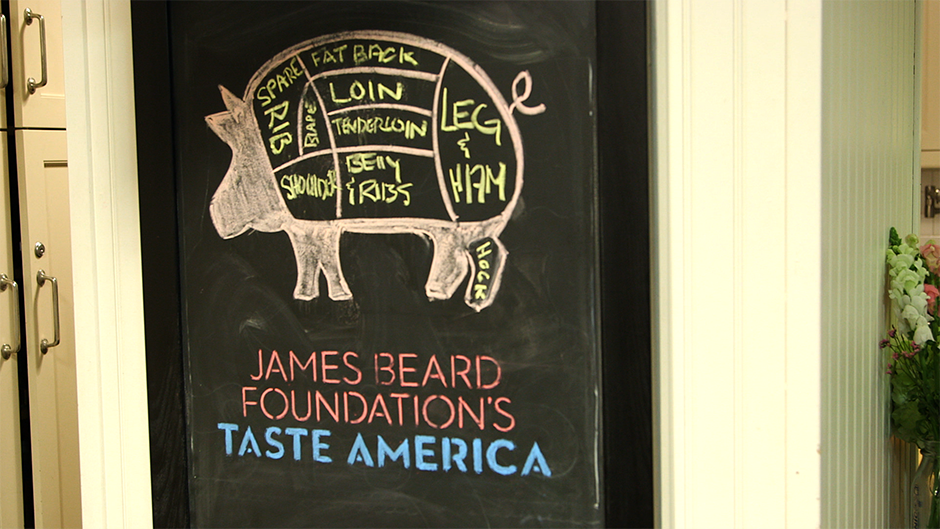The food and restaurant industries are responding to an increasing number of requests for gluten-free foods. Why now?For some it is the latest fad diet, but the truth is that gluten intolerance has more than quadrupled in the last 60 years (Discovery’s Edge 2010, Murray 1999). Gluten intolerance, or celiac disease, occurs among individuals who experience inflammation of mucosal cells of the small intestine when gluten from wheat, rye, barley, and processed foods are consumed.
Nearly 1% of the world’s population has a permanent form of gluten intolerance and one-third of human populations carry genes that, if triggered, can produce intolerance. Approximately 30% of Northern Europeans carry the trait, but only 5% develop celiac disease.
How did celiac disease originate?
For over four million years, our hunter-gatherer ancestors consumed small amounts of gluten. As the last ice age melted, large game vanished and the Neolithic or Agricultural Revolution began with a dependence on grains. The origin of agriculture occurred with barley and wheat domestication along the Tigress-Euphrates river valley in the Middle East (7800 BC). As the amount of grain increased in the human diet, selection favored those who could eat the gluten-rich diet and remain healthy. It also created an energy-rich food supply that allowed rapid population growth.
The origin of the HLA genes that prevent inflammation of the gut appeared among these early farmers. As the populations increased and migrated, the alleles that favored gluten tolerance also increased. Why?
Farmers began baking yeasted bread and selected varieties of wheat high in gluten; as gluten-rich grains were consumed, selection favored individuals with the genes to prevent inflammation of the gut, increasing their frequency in the population.
As the migrating populations mixed with native populations, the foragers who did not adapt to farming were pushed into increasingly marginal environments. Among modern populations, the frequency of the HLA system distribution steadily increases in populations along the route of their migration. Today northwest Europeans share approximately 65% of their genetic makeup with the Middle Easterners who originated wheat and barley agriculture. Those who did interbreed and begin to farm began to carry the HLA system genes and favored increases in the alleles associated with gluten tolerance. The frequency of gluten intolerance and celiac disease is greatest in northwestern Europe (Greco 1997). The origins of gluten intolerance lie with our hunter-gather relatives; the origin of gluten tolerance lies with our farmer relatives.
The rapid rise of gluten intolerance in the past sixty years is a problem of evolutionary medicine: what in the genetic predisposition, lifestyle and environment has changed to sensitize an increasing number of individuals to glutens? Autoimmune disorders such as celiac disease require expression of genes that in the presence of gluten rich diets will cause the disease. Few are born with permanent celiac disease, but another form of the disease occurs when environmental triggers activate the genes to produce the inflammatory reaction. These genes along with gluten are not able to cause the disease alone or a third of the human population would have celiac disease. Gluten intolerance is not a simple inborn disease, as once thought, but a complicated syndrome with forms that can be triggered by environmental exposures and behaviors (Murray 1999).
So, why do we see an increase in gluten intolerance today?
In evolutionary medicine we are able to track the development of diseases to forms of human adaptation. When human behaviors and environments change and when populations either expand and migrate or become small and isolated, we see changes in our gene frequencies and immune systems.
Studies have demonstrated that the decrease in breastfeeding and early introduction of wheat to an infant’s diet increases their risk of celiac disease (Murray 1999).
In Sweden, where populations have some of the highest rates of gluten intolerance, the incidence of celiac disease in infants has decreased significantly by extending breastfeeding to a year and delaying introducing wheat cereals (Velasquez-Manoff 2013).
Another factor is that wheat production is at an all time high for the world’s populations resulting in expanded wheat distribution and consumption among those who never ate wheat (think of the invention of the wheat tortilla and its export to Central American nations). Wheat seed has also gone through rapid microevolutionary change through breeding experimentation and genetic modification of the form and amount of gluten. Each of these offers examples of how rapidly changing human behaviors can impact the development of celiac disease; however, other factors also contribute to this complex nutritional problem.
Current conditions can trigger the genes to produce intolerance or sensitivity. These include repeated viral illnesses, the change in diet to include gluten-rich processed foods, a decrease of bifodobacteria (a probiotic in the gut) gastrointestinal surgery, pregnancy, and a high-dose gluten challenge (Greco 1997; Murray 1999). Individuals who maintain a high level of bifodobacteria in the gut have a lower risk of celiac disease (Velasquez-Manoff 2013).
We really know very little about what combination of genetic, immunological, physiological, cultural, and behavioral traits lead to any one case of celiac disease, but improved diagnostics cannot account for the increase in gluten sensitivity and celiac disease. Changes in our environment, wheat varieties, and dietary behaviors all play a role in the fourfold increase in gluten intolerance that is creating the demand for gluten-free eating. Eating gluten-free remains the only option to control the disease today.
CITATIONS
“Celiac Disease: On The Rise.” Discovery’s Edge: Mayo Clinic’s Online Research Magazine. Mayo, July 2010. http://www.mayo.edu/research/discoverys-edge/celiac-disease-rise (accessed February 10, 2014)
Grecco, L. “From the Neolithic Revolution to Gluten Intolerance: Benefits and Problems Associated with the Cultivation of Wheat.” Journal of Pediatric Gastroenterology and Nutrition 24 (1997): 14-17.
Murray, Joseph A. “The widening spectrum of celiac disease.” American Journal of Clinical Nutrition. 69 (1999): 354-65.
Velasquez-Manoff, Moises. “Who Has the Guts for Gluten?” New York Times, February 23, 2013.






